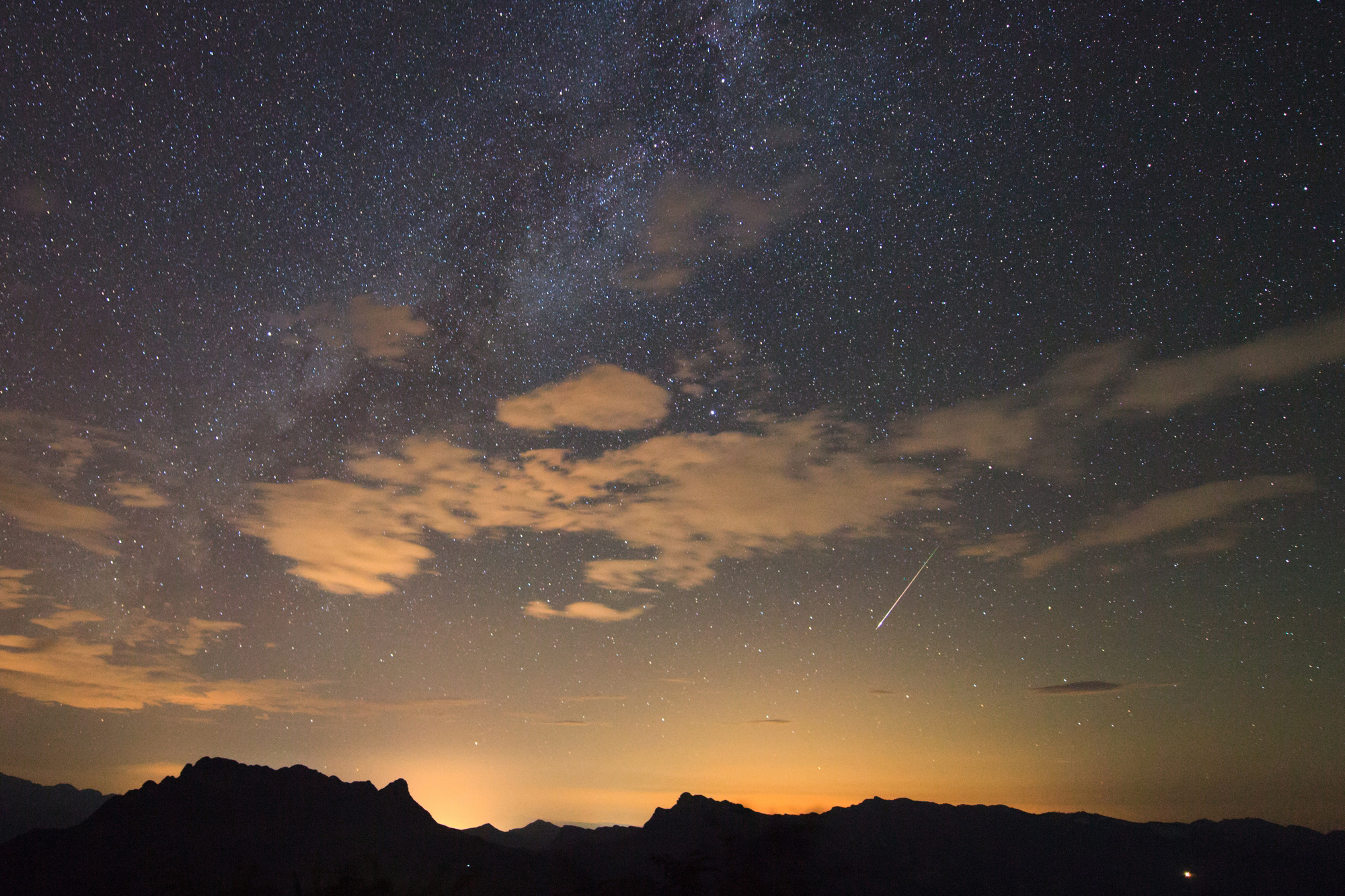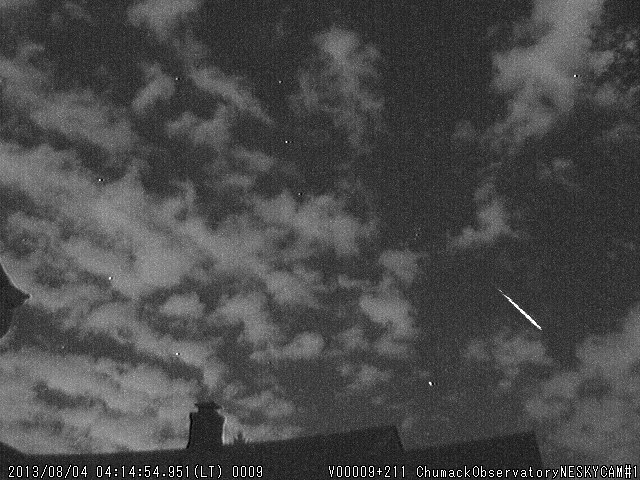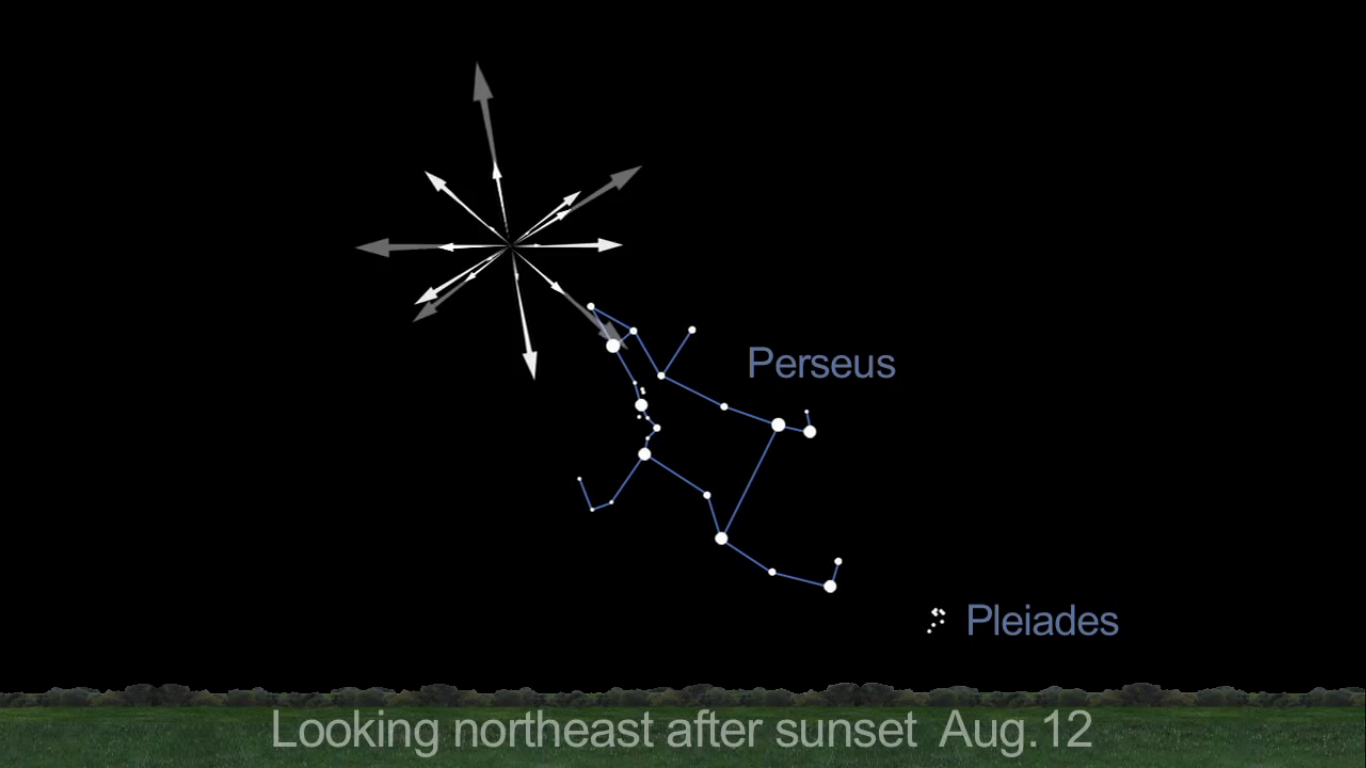Perseid Meteor Shower Is Peaking Now: How to Watch

Editor's update (Aug. 12, 2014): The 2014 Perseid meteor shower is peaking now and you can watch it live online tonight. Find out how with our latest story: Perseid Meteor Shower Peaks Tonight: Watch It Live Online.
Update for Aug. 12, 2013: See the latest amazing photos from the 2013 Perseid meteor shower and new webcast info here: Amazing Perseid Meteor Shower Photos: Celestial Fireworks Wow Stargazers
The annual Perseid meteor shower created by leftover bits of a comet is at its best in the night sky now, but there are a few tips to keep in mind to make the most the cosmic fireworks show.
The 2013 Perseid meteor shower will peak in the late overnight hours of Sunday and Monday (Aug. 11 and 12), and could light up the night sky with up to 100 meteors an hour for stargazers with the best viewing conditions. To see the most meteors, you will need clear weather and a dark sky far from the interference of bright city lights.

"For optimal viewing, find an open sky because Perseid meteors come across the sky from all directions. Lie on the ground and look straight up into the dark sky," NASA scientists advised in a skywatching guide. "Again, it is important to be far away from artificial lights. Your eyes can take up to 30 minutes to adjust to the darkness, so allow plenty of time for your eyes to dark-adapt." [How to See the 2013 Perseid Meteor Shower]
The Perseids appear to radiate out of the constellation Perseus, which is how they get their name. The constellation is currently in the northeastern night sky after sunset, but observers will likely see more meteors by looking straight up, and not directly at the constellation, NASA scientists have said.
If bad weather spoils your Perseids viewing, don't fret. You can also watch the meteor display online tonight in two free webcasts. You can watch the Perseid meteor shower webcasts live on SPACE.com, courtesy of NASA and the Slooh Space Camera.
Get the Space.com Newsletter
Breaking space news, the latest updates on rocket launches, skywatching events and more!
Beginning at nightfall, NASA's all-sky camera at the Marshall Space Flight Center in Huntsville, Ala., will offer a live view of the night sky and any meteors that flare up overhead. The webcast caught 14 Perseid meteors during its first night on Saturday (Aug. 10), MSFC officials said.
At 7 p.m. EDT (2300 GMT) tonight, the Slooh Space Camera, an online stargazing website that uses remotely operated telescopes, will offer a free webcast from its observatory on Mt. Tiede in the Canary Islands, off the western coast of Africa. You can watch the feed on SPACE.com or directly from Slooh via the Slooh Space Camera website.

Skywatchers around the world have already begun enjoying the Perseid meteor shower. Photographer Jeff Dai joined a group of stargazers in China who ventured up Mount Jinfo in Chongqing to observe the celestial display.
"Our 10-man group enjoyed more than 300 meteors early this morning," Dai told SPACE.com in an email today. "The waves of cheering lasted all night."
![Learn why famous meteor showers like the Perseids and Leonids occur every year [See the Full Infographic Here].](https://cdn.mos.cms.futurecdn.net/VDWEKQFLr8yuXkTL4YkHqj.jpg)
The Perseid meteor shower occurs each year in min-August when the Earth passes through a dusty trail of leftovers from Comet Swift-Tuttle, a comet that orbits the sun once every 133 years. Most of this comet debris, which is made up of bits of ice and dust, is more than 1,000 years old, according to a NASA description.
As the Earth passes through the Swift-Tuttle debris stream, the ice and dust fragments slam into the atmosphere and burn up, creating one of the best meteor showers of the year for stargazers.
Humans have been observing the Perseid meteor shower for at least 2,000 years, NASA officials said. If you are planning an all-night meteor session, here are two more tips:
Get comfortable: Staring up at the night sky from the ground or a standing position can be tiring on your neck. Consider a reclining lawn chair to stay comfortable.
Stay warm: It can get chilly at night, even in the summer, so a light jacket or windbreaker might be just what you need to avoid dipping back inside and ruining your night vision.
Editor's Note: If you snap an amazing picture of the 2013 Perseid meteor shower or any other night sky view that you'd like to share for a possible story or image gallery, send photos, comments and your name and location to managing editor Tariq Malik at spacephotos@space.com.
Email Tariq Malik at tmalik@space.com or follow him @tariqjmalik and Google+. Follow us @Spacedotcom, Facebook and Google+. Original article on SPACE.com.
Join our Space Forums to keep talking space on the latest missions, night sky and more! And if you have a news tip, correction or comment, let us know at: community@space.com.

Tariq is the Editor-in-Chief of Space.com and joined the team in 2001, first as an intern and staff writer, and later as an editor. He covers human spaceflight, exploration and space science, as well as skywatching and entertainment. He became Space.com's Managing Editor in 2009 and Editor-in-Chief in 2019. Before joining Space.com, Tariq was a staff reporter for The Los Angeles Times covering education and city beats in La Habra, Fullerton and Huntington Beach. In October 2022, Tariq received the Harry Kolcum Award for excellence in space reporting from the National Space Club Florida Committee. He is also an Eagle Scout (yes, he has the Space Exploration merit badge) and went to Space Camp four times as a kid and a fifth time as an adult. He has journalism degrees from the University of Southern California and New York University. You can find Tariq at Space.com and as the co-host to the This Week In Space podcast with space historian Rod Pyle on the TWiT network. To see his latest project, you can follow Tariq on Twitter @tariqjmalik.









